The latest chapter in the Legend of Zelda series is a masterclass in elegant design, filled with interlocking gameplay systems wrapped in a gorgeous aesthetic and played over one of the most endearing worlds Nintendo has ever created.
No matter its faults, The Legend of Zelda: Breath of the Wild is a masterpiece. It is not a flawless gem, but it remains so brilliant as to stand head and shoulders above most of the best games of the decade, let alone the year.
Breath of the Wild takes place in the land of Hyrule, in one of the biggest and most universally traversable maps ever created for a game, let alone the Zelda series. The game borrows heavily from the preponderance of other open-world titles but seasons it with that distinct Nintendo flavor. You play as Link, the fabled hero and dauntless rescuer of Princess Zelda, and roam the land, serving its people and uniting its nations, gaining strength for your inevitable battle against series antagonist Ganon. And while the broad strokes of the story may feel intimately familiar, there is character and depth lurking beneath the surface that consistently impressed me.
Whether you’re running, sliding, climbing, or riding, exploring the environment is a constant joy. The gameworld is speckled with countless shrines; each one is an environmental puzzle, and they come in wildly varying degrees of complexity that will challenge you to learn the ways to manipulate the game’s systems in order to succeed.
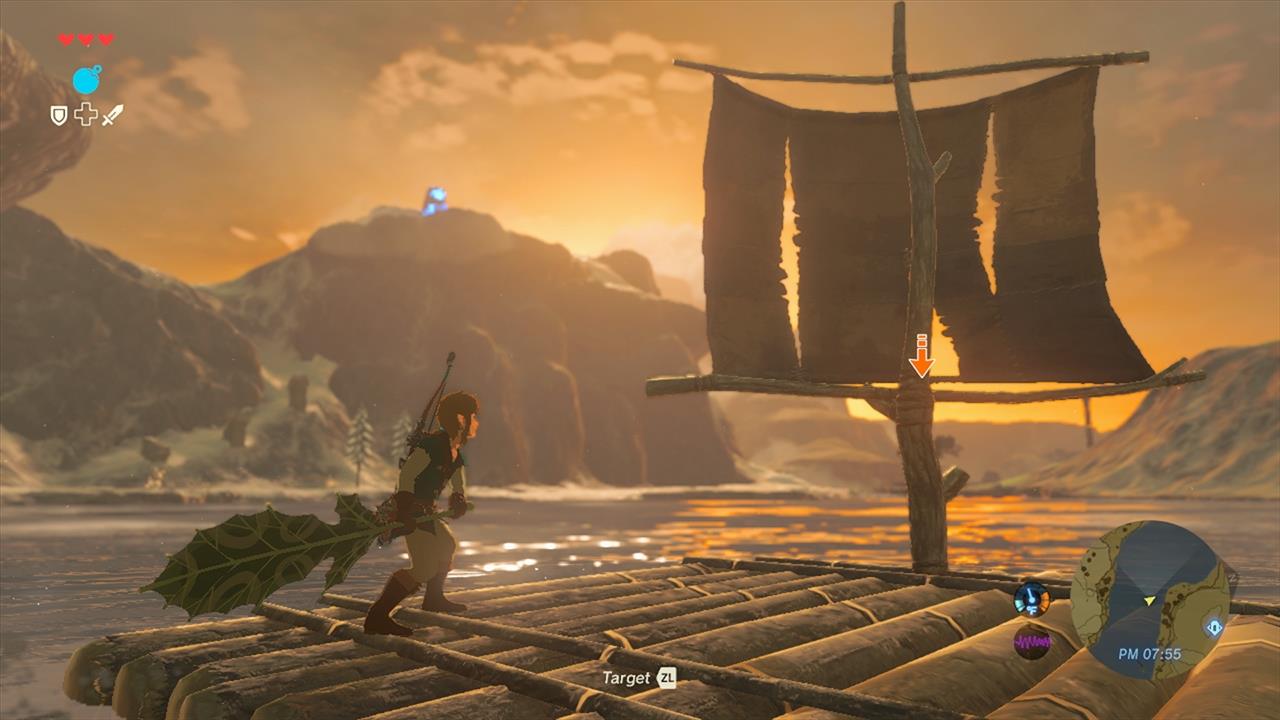
And there are a lot of systems. At any given moment, your gameplay will be influenced by your weapons, armor, cooked meals, elixirs, the time of day, the region you’re in, the weather, the temperature, and the multitude of boulders, logs, and other objects around which you will have to strategize to emerge from combat victorious and solve a wealth of puzzles. It’s as complex and involved as it sounds, but even more fun.
That’s the thing, really. It’s almost impossible to find something in Breath of the Wild that isn’t fun. Even the activities that would serve as mindless filler in other games feel fresh and fun because of just how dynamic the world itself can be. This is how you build an open world. You won’t just want to go back to the game, you’ll want to go back to Hyrule itself. That in itself is a tremendous accomplishment and cannot be overstated.
Even the elementary core of Breath of the Wild‘s combat feels great. It is simple yet responsive, a tangle of the typical dodging and striking with all manner of more creative approaches. Once again, swiping your weapon is far from the only way to handle a situation. Want to attach a dozen balloons to a raft, float it over a bokoblin encampment, then shoot the balloons to crush them? Go for it. Or roll a boulder over them. Or set everything on fire and mop up the charred foes that survived.
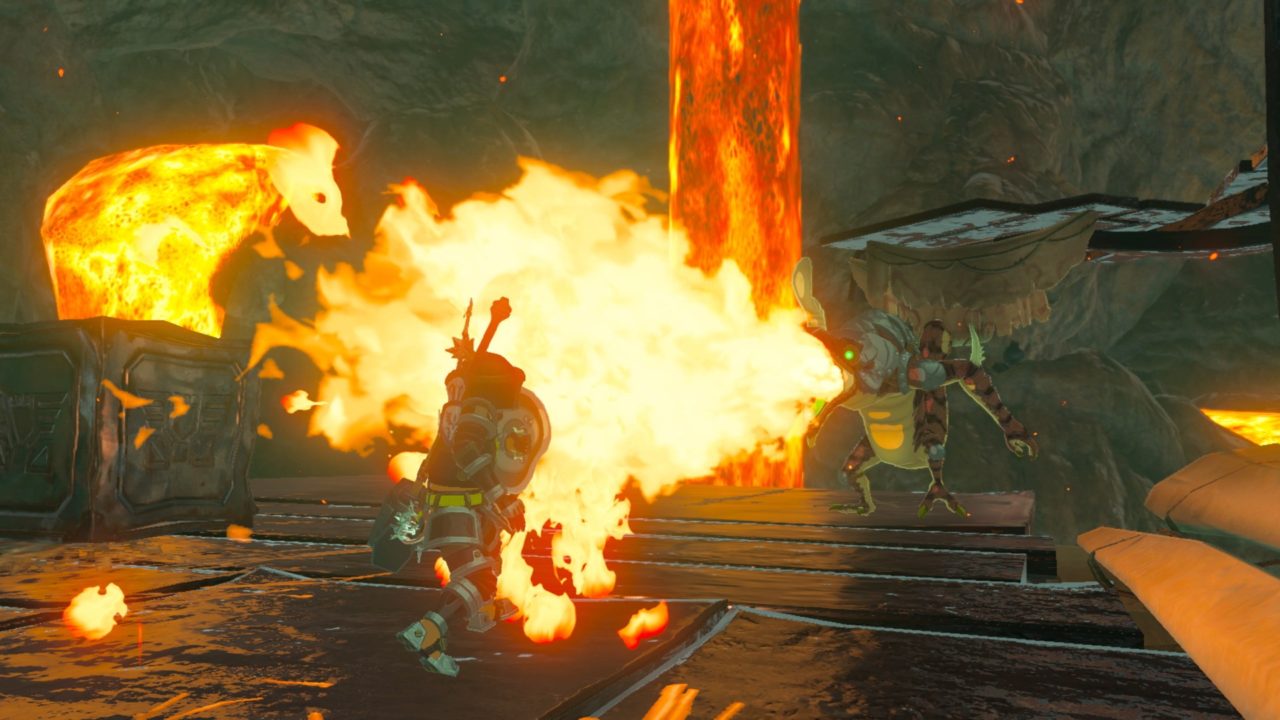
Roll some boulders and then freeze time and climb atop one for the ride. Rain explosive arrow hellfire on enemies below from your glider. Chop down massive trees onto your foes. Lure them to a bomb beside the edge of a cliff. The nature of the game is so dynamic as to not only allow these scenarios — and many, many more — but to reward you for them, and sometimes even, at times, expect this type of creative thinking from the player. The tools you need to succeed are always at your disposal, and the game expects you to exploit them in ways that most games are mortally terrified of allowing. Breath of the Wild doesn’t just give you permission, it revels in the possibilities.
Breath of the Wild is also home to an absolutely massive cast of characters, and all of them have something to say. Whether they’re sending you on one of the dozens of sidequests you’ll encounter or just making conversation, the cast is endearing almost to a fault. Even the most seemingly unimportant character might carry a vital clue to one of the myriad mysteries hidden in every conceivable corner of Hyrule.
None of the game’s writing is especially elegant on its own, but Breath of the Wild commits so fervently to it that it remains difficult to keep from being drawn in. It’s a study in earnest storytelling that makes up for lack of technique with sheer enthusiasm. The soundtrack is also predictably stirring, whimsical, and epic by turns.
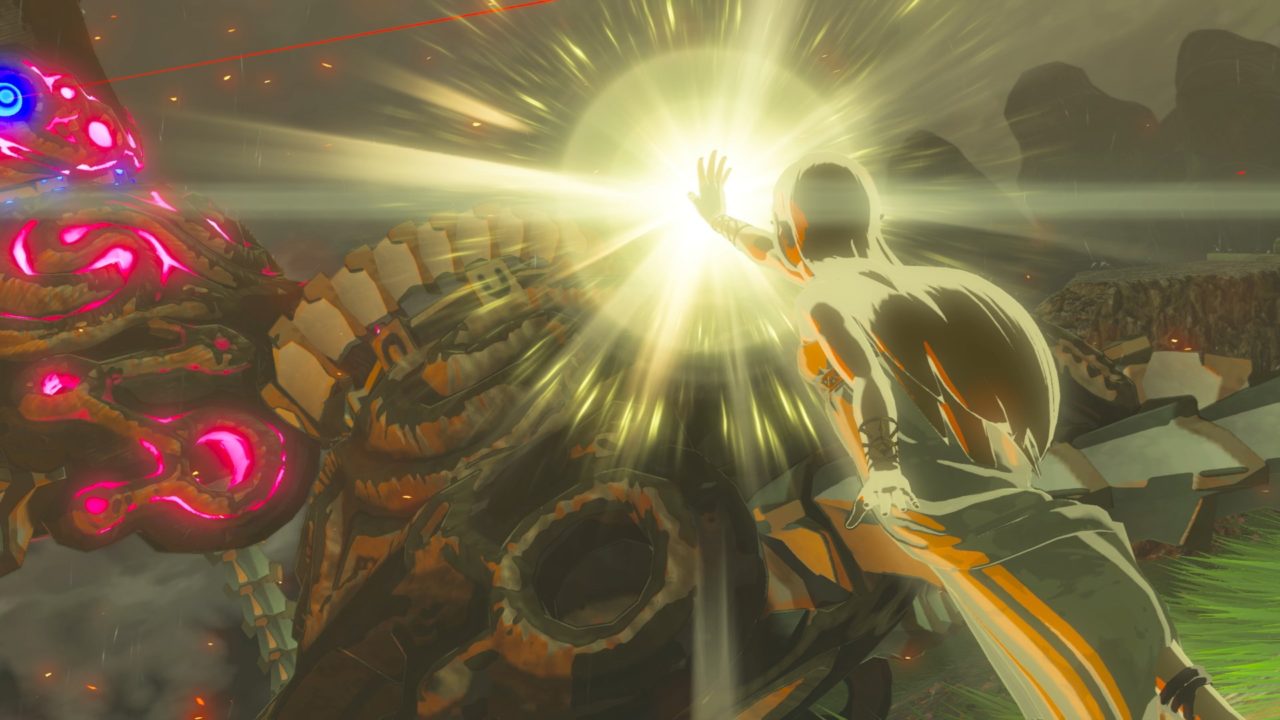
All of these characters populate a breathtaking world. Breath of the Wild is a game that may not stand beside the technical wizardry of other games in this generation, but it leverages its art direction to stunning effect. Low-resolution textures and simple geometry don’t stand up to close inspection, but the raw sense of scale and organic design are quite simply unmatched by just about anything else in gaming.
I spent a couple of hours just searching for my ideal horse and cooking up meals that would give me the stamina to tame her. Even the horses have different personalities, and some require more effort to bond than others, even after they are saddled and registered at the local stable.
Another time, I inadvertently spent an entire in-game night chasing fireflies through the depths of a misty forest. There are mountains to climb, with warm clothes and spicy food to keep you from becoming a Link-sicle. It’s easy to become lost in this game, in the very best of ways.
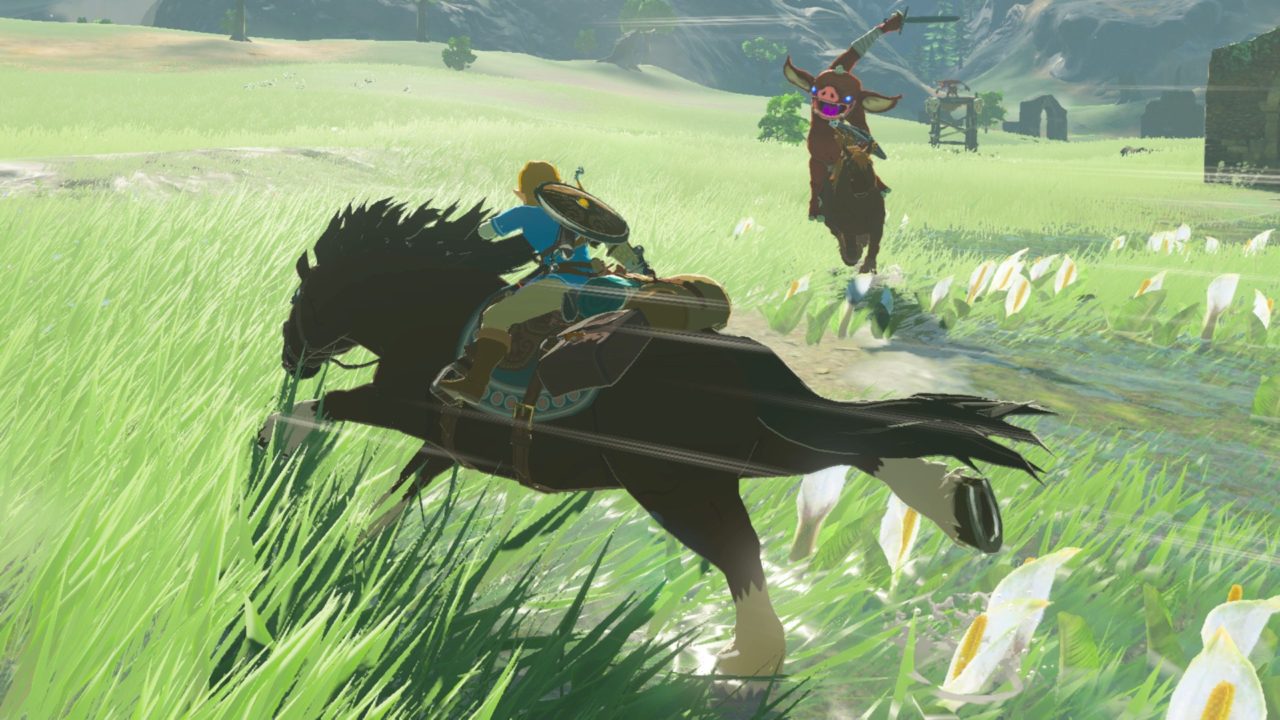
The game’s systems aren’t universally fun. Specifically, the weapon durability mechanic in Breath of the Wild sabotages its otherwise stellar sense of immersion for the sake of mandating a certain style of play. Rather than encouraging the player to use the vast array of entertaining combat options available, the wet-paper durability of every weapon in the game outright forces constant inventory management in the midst of even the most cut-and-dry encounters.
Sometimes the solutions you find to dealing with your fragile arsenal in the midst of this can be enjoyable, but it’s just as often a source of irritation. It’s a design decision that could have been a benefit to the gameplay had it been implemented with more restraint. As it stands, it feels too much as if it’s haranguing the players into micro-managing largely forgettable items just so they can make it to their next objective alive.
Regardless of creative design surrounding those items, you are never permitted to become attached to them because each one is so necessarily disposable. If they had differentiated each weapon less by the damage it does and focused more on individual utility, they could have accomplished the same philosophical objective without excising the personal attachment and sense of accomplishment that comes with item collection done right.
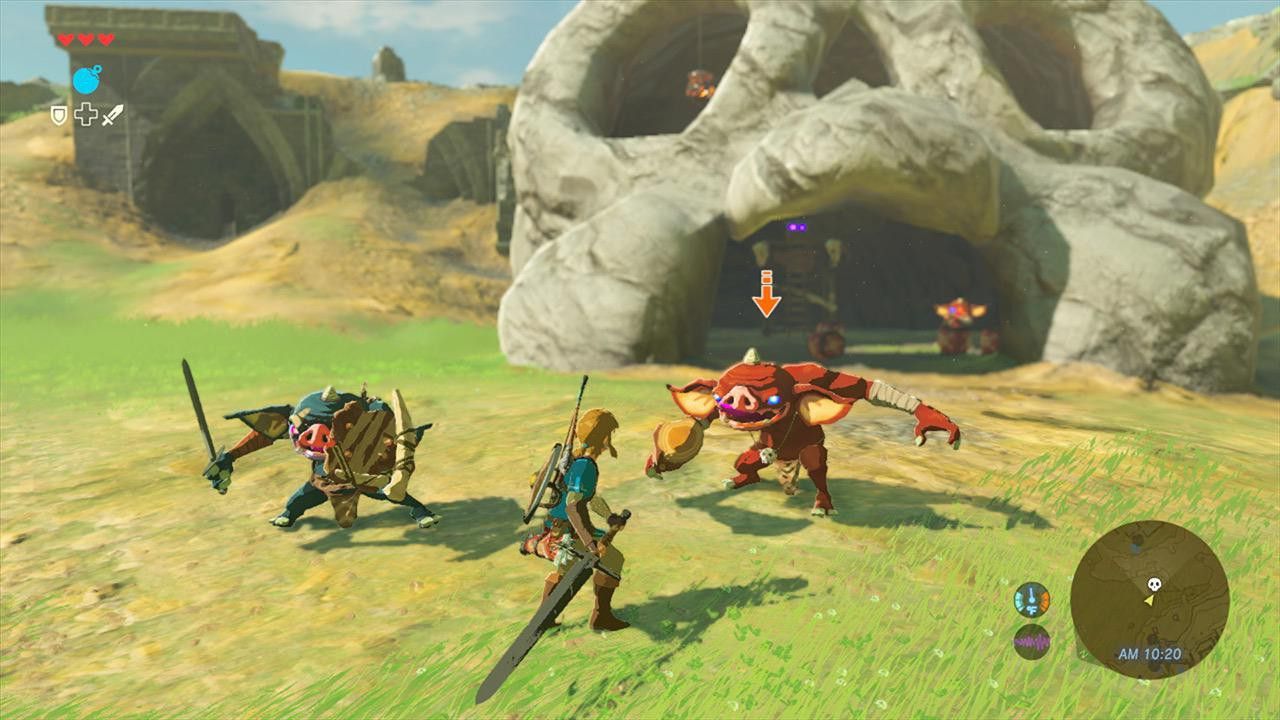
For example, you cannot wear metal if you’re going to run around in a thunderstorm unless you prefer your Link flash-fried by lightning. That means the primitive wood and bone weapons of the goblinoid enemies are necessary to keep with you for when you’re caught in the wilderness and a storm rolls through. It’s a simple mechanic that makes it useful to keep less efficient items around, just in case. I don’t need my sword to break in half after a dozen swings to encourage that type of flexibility; there is already a fun and organic reason for me to vary my equipment. Pepper in some varying damage types along with the attack variety and capable artificial intelligence the game already uses, and you could preserve all of the good parts of the system with little to none of the bad.
The other major criticism I have is a technical one. Performance, for the most part, is just plain bad. The game runs poorly on both the Wii U and the Switch, clawing for more processing power that neither console possesses. I cannot help but feel that the game would have attained virtual perfection had Nintendo shifted its focus to developing its universally acclaimed software on more capable hardware.
Both versions of the game are functionally identical, with just a slightly higher resolution differentiating them. This is a game that could certainly sell the Nintendo Switch, but if you have a Wii U there isn’t an especially compelling motivation to upgrade consoles for this game. Even compared side by side, the differences are rarely noticeable.
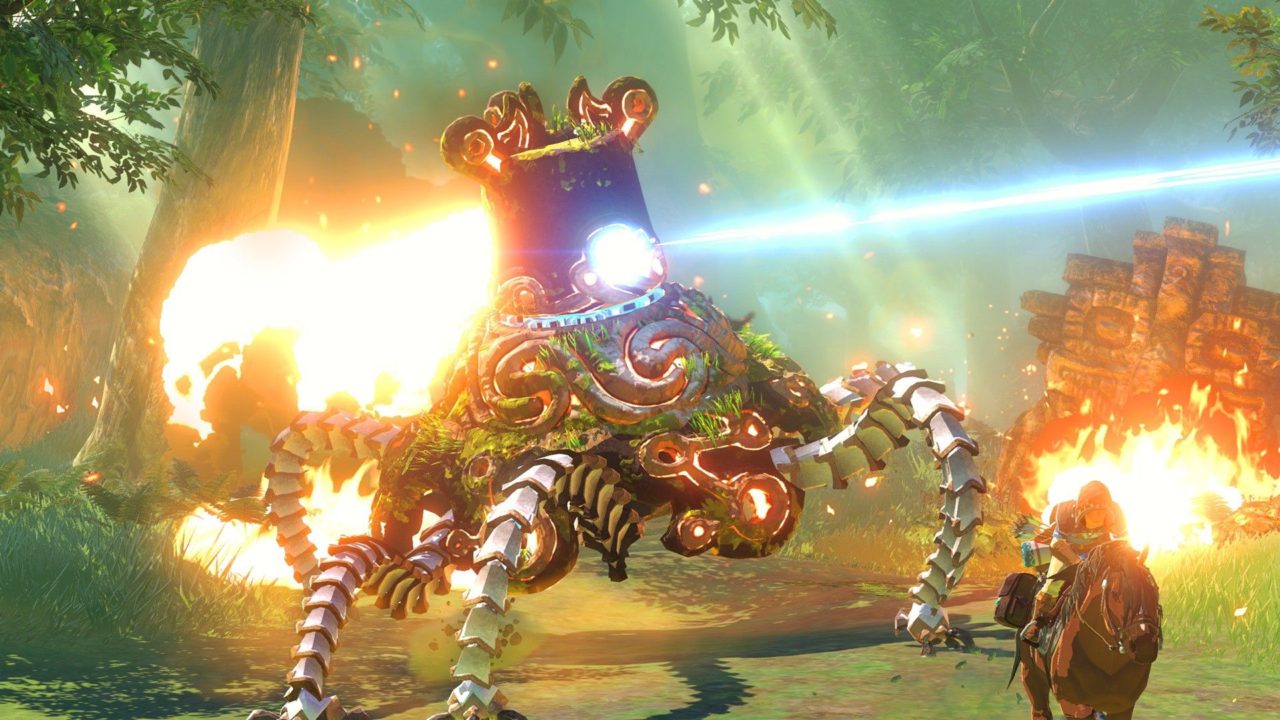
But in the end, none of this criticism feels like it matters. Breath of the Wild gets almost everything else right, and everything outside of its technical shortcomings are subjective disagreements in design that still can’t manage to hold back an enormous, thrilling, and utterly charming experience that absolutely no one should miss.
For all its flaws, The Legend of Zelda: Breath of the Wild is gaming at its best.
Follow Nate Church @Get2Church on Twitter for the latest news in gaming and technology, and snarky opinions on both.
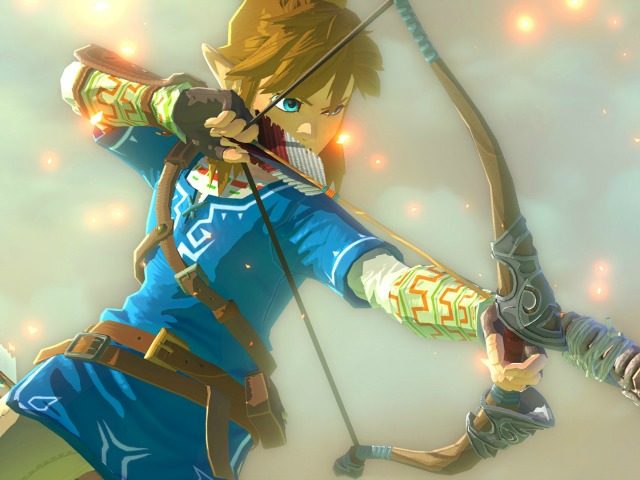
COMMENTS
Please let us know if you're having issues with commenting.